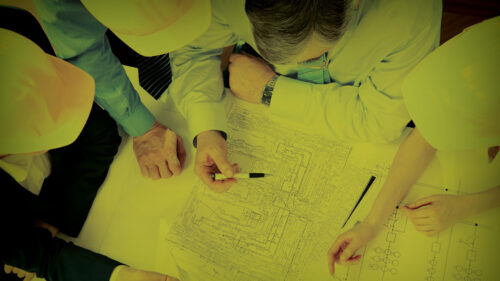Truth or myth? It takes 21 days to form a new habit! MYTH! But really, who wouldn’t like the idea of changing their life in just 3 weeks?!
The truth is that it takes anywhere from 18 to 254 days (or 2-8 months). But guess what? That means there’s still time in 2017 to create a new habit! And when it comes to architects, engineers, and projects, it’s important to remember that “changing” is a process not an event!
So what can you do in the year ahead to create a beneficial habit for your business that produces positive results? Here are three tips!
Select Projects and Evaluate Clients Carefully
As hard as it sounds, be willing to walk away! This phase will pay dividends if you negotiated a good work-scope. Failure to get any or adequate construction contract administration services included in your scope can present you with great risk. Let’s face it, no set of documents ever created and passed to the contractor has been perfect.
Each year, the American Council of Engineering Companies conducts an insurance and risk management survey of its members. One of the questions is about the number of personnel hours spent defending claims. Just a few years ago, 70 percent of the respondents reported they invested more than 80 personnel hours defending claims and handling disputes. This number held steady for three years. In the last two years, however, that figure has spiked considerably to almost 200 hours per year.
Do the math. Even using the more modest 80-hour figure, the costs are tremendous. To begin, multiply the hours spent by an hourly rate, say $100. The result is $8,000. Not so bad, you may think. But that’s lost profit. To calculate the amount of work a firm has to bring in to replace that profit, you take the $8,000 and divide it by the firm’s profit margin. Using 10 percent, the result is $80,000.
Without considering any direct costs — like your deductible or any out-of-pocket damages — the firm will need to secure $80,000 worth of problem-free work to make up the lost profit due to personnel hours spent defending the claim.
That’s a pretty big tab when you consider that the typical fee per job is $5,000. Understanding and managing your risk can improve your bottom line.
Set Realistic Expectations
Address scope and anti-scope with the client. Identify what you will perform, what you aren’t performing, and what’s being performed by others. Today, projects are more complex, include new goals (such as sustainability), and use new processes. Your work-scope needs to reflect these current realities.
The most significant scope development aligns with solid project evaluation. Some firms simply fail to step back and ask where the risks lie for them in a project. The answer could be the project itself or something the client insists on, such as an inexperienced contractor, unrealistic budget, or very tight schedule.
Surprisingly, many design firms still begin work on a project before the contract is in place. Secure a contract with the client that fairly allocates project risk, and include a contingency fund. Clients who are unwilling to set aside funds for unforeseen issues can be problematic.
Identify and Address Warning Signs Sooner
Significant overruns on budget or costs, being behind schedule, exclusion from important meetings, and not getting paid in a timely manner are all warning signs. Ask yourself, “When was the last time I worked on a project that was free of conflicts, errors, and omissions?” Design and construction is a complex business, and if you’re like many designers, these types of problems are actually commonplace.
Communication is always important, and so is your ability to be a diplomat and negotiator when conflicts surface to deal with some difficult construction issues (such as standing by choices previously made about quality, schedule, and budget). Plus, don’t forget that your documentation and field reports need to be clear, concise, and accurate.
With 2017 just beginning, now is a great time to re-evaluate how you handle projects. Do processes need to change to ensure productivity and profitability? Do you need to set more realistic expectations for work? Why not start now and create a habit? And if you aren’t sure where to start, reach out to our Architects and Engineers team with questions. We’re always available to help with any questions you may have.







